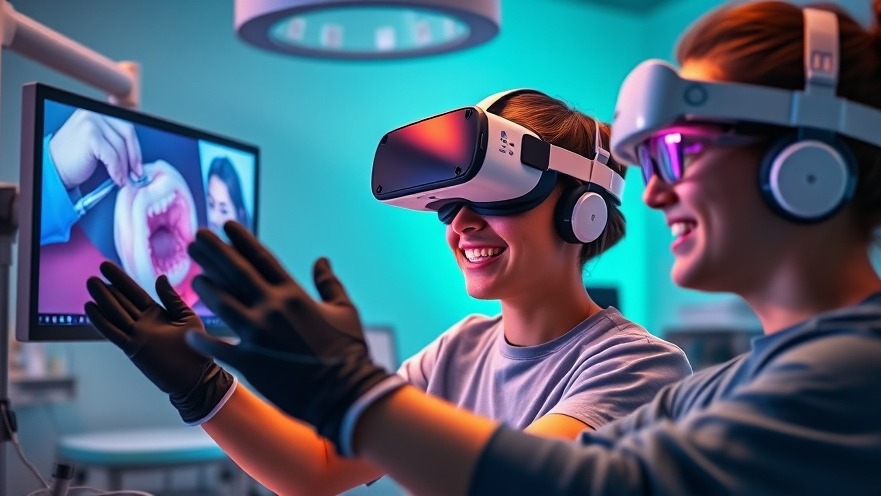
Understanding the Role of VR-Haptic Technology in Dental Education
The landscape of dental education is rapidly evolving as technology integrates more deeply into curriculums. At the forefront of this change is VR-haptic technology, an innovative tool that combines virtual reality (VR) with haptic feedback, allowing students to refine their hands-on skills in a simulated environment. A recent study, which surveyed 156 educational institutions worldwide, reveals a wave of enthusiasm for this technology but also uncovers significant hurdles to its implementation.
The Survey Results: Opportunities and Challenges
The survey, conducted by the University of Eastern Finland and published in Frontiers in Dental Medicine, drew responses from 387 dental educators. A notable 35% of the respondents reported experiencing technical limitations such as low haptic precision and limited procedural options, which inhibited effective skill transfer to real-life patient care. This underscores a major opportunity for tech developers to enhance the technology's capabilities.
Furthermore, about 28% of institutions are facing financial constraints when it comes to acquiring VR-haptic devices. These financial barriers lead to shortages, restricting access for students and potentially stunting the growth of clinically competent practitioners. A fact that cannot be ignored is the resistance to change—about 24% of respondents indicated hesitance from both educators and students towards adopting these tools, mainly due to disruptions in traditional teaching methodologies.
The Value of Multidisciplinary Collaboration
To overcome these challenges, experts stress the need for multidisciplinary collaboration amongst various specializations within dentistry, such as restorative dentistry, prosthodontics, and endodontics. This collaboration will not only pave the way for developing comprehensive, discipline-specific training scenarios but also lend to innovative solutions for enhancing the technology's realism and efficacy.
Innovative Strategies for Implementing VR-Haptic Technology
To facilitate the successful integration of VR-haptic tools, the study recommends several strategic approaches: firstly, advancing hardware and software development tailored to the educational needs of dentistry. Secondly, reducing costs associated with these technological implementations will be key to broadening access.
Additionally, targeted faculty training can be instrumental in demonstrating the educational benefits of VR-haptics. Educators equipped with knowledge and understanding of the technology can better convey its impact on student learning, fostering a positive attitude towards its adoption.
Future Predictions and Trends in Dental Education
As we step into a future increasingly influenced by digital technologies, VR-haptic systems could revolutionize the way dental skills are taught. The trends suggest a shift towards more immersive learning environments, where students can practice in a risk-free setting. Such advancements will likely decrease the gap between theoretical knowledge and practical application, ultimately enhancing patient care.
Final Thoughts: The Path Forward
Embracing VR-haptic technology in dental education is not merely about introducing a new tool; it is about reimagining the entire approach to training future dentists. As the survey points out, addressing the technical, financial, and cultural barriers that remain is crucial. It is imperative that the dental community comes together to cultivate an environment of learning that not only incorporates cutting-edge technology but also prepares practitioners to meet the evolving needs of their patients. As health practitioners on the frontline, staying informed about these trends can enhance patient outcomes and facilitate improved strategies within practices.
Call to Action: As technology continues to evolve, so must our approaches to patient care and education. Engage with discussions around VR-haptic technology and consider how such innovations can reshape dental practices for the better.
 Add Row
Add Row  Add
Add 




Write A Comment